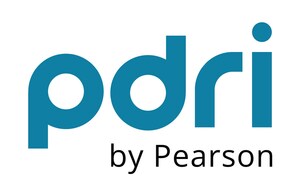PDRI President Offers New Perspective on Performance Management in Effective Practice Guideline Series Published by SHRM Foundation
Building a High Performance Culture: A Fresh Look at Performance Management Shows Daily Engagement Is Far More Effective than Traditional Performance Reviews
WASHINGTON, June 25, 2012 /PRNewswire/ -- Managers regret giving them; employees resent receiving them. Now there is evidence that traditional performance reviews, a time-honored annual practice at millions of organizations worldwide, can actually have a negative impact on individual and organizational performance. A recently released report, Building a High-Performance Culture: A Fresh Look at Performance Management, explores how leaders can go beyond the formal review process to create a performance-based culture using strategies such as improved communication and better relationship-building skills. Co-authored by PDRI executive leadership, this report presents important research findings in a condensed, easy-to-use format for busy managers and HR professionals. Published as part of the Effective Practice Guideline Series by the SHRM Foundation, a nonprofit human capital management research group, the report summarizes the latest research and thinking on high-performing workplace cultures, and identifies specific tools to develop more effective performance management behavior in organizations.
"The key to effective performance management is employee engagement," according to report co-author Elaine Pulakos, president of PDRI, an SHL Company, and past president of the Society for Industrial and Organizational Psychology (SIOP). "Today's most effective leaders don't see performance management as a formal system of reviews and ratings, but rather as a set of key behaviors that help reinforce an employee's sense of purpose, control over the work environment, and ability to do what one does best."
Included among the strategies for achieving sustainable performance improvement contained in this 28-page report are these recommendations for managers to use in driving results:
- Set clear expectations for employees—so they can deliver.
- Help employees find solutions to problems.
- Play to employees' strengths rather than their weaknesses in work assignments.
- Acknowledge employees' strengths while also addressing development needs.
- Provide ongoing, informal feedback.
The conclusions, strategies and recommendations presented in Building a High-Performance Culture are supported by two decades of studies from leading research organizations documenting that effective performance management behavior can boost productivity, increase profits and reduce employee turnover. To download your complimentary copy of Building a High-Performance Culture from the SHRM Foundation, go to www.shrmfoundation.org.
About PDRI
Founded in 1975, PDRI, an SHL company, has built a global reputation of excellence by designing, developing and implementing human capital and training solutions that incorporate the most recent advances in the behavioral sciences and adhere to the highest principles of professional practice. PDRI's PerformanceFIT™ suite of integrated talent management solutions helps government and commercial clients hire, train, develop, manage and motivate employees to build and sustain high-performance cultures. For more, visit www.pdri.com.
About the SHRM Foundation
The SHRM Foundation is the 501(c)3 nonprofit affiliate of the Society for Human Resource Management (SHRM), the world's largest association devoted to HR management. The SHRM Foundation advances global human capital knowledge and practice by providing thought leadership and educational support; and sponsoring, funding and driving the adoption of cutting edge, actionable, evidence-based research. The Foundation is governed by a volunteer board of directors, comprising distinguished HR academic and practice leaders. Contributions to the SHRM Foundation are tax deductible. Online at www.shrmfoundation.org.
SOURCE PDRI
WANT YOUR COMPANY'S NEWS FEATURED ON PRNEWSWIRE.COM?
Newsrooms &
Influencers
Digital Media
Outlets
Journalists
Opted In




Share this article